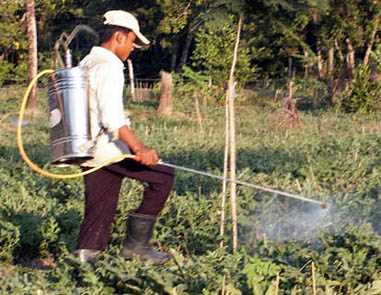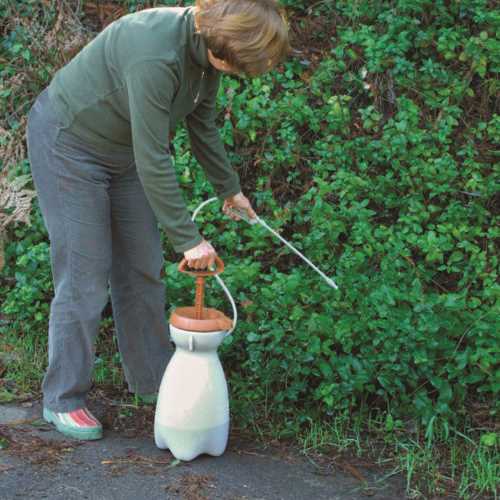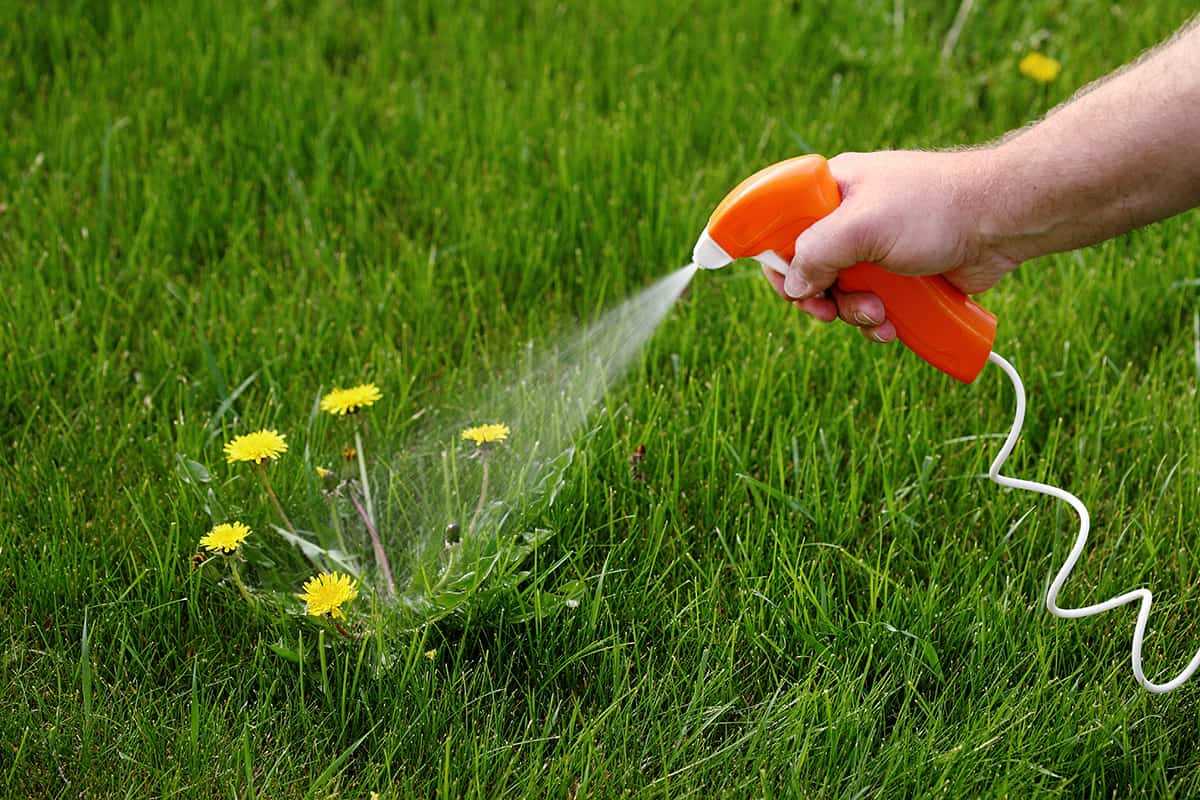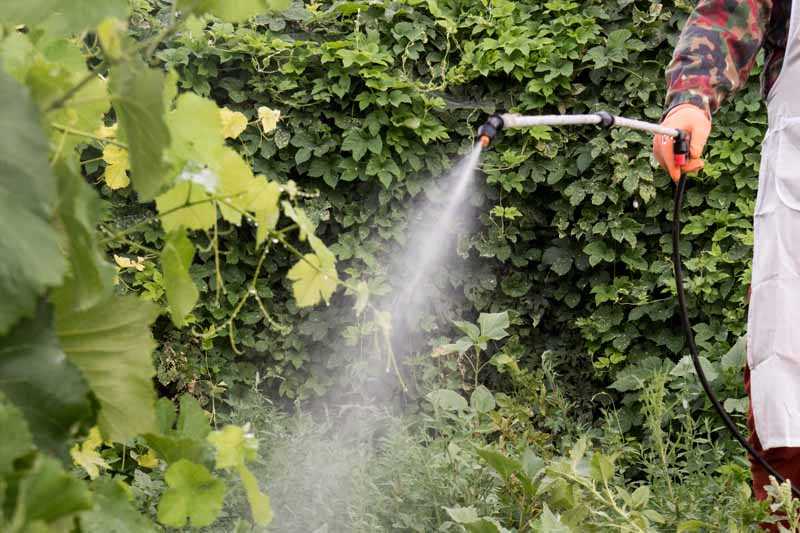- Importance of Garden Spraying
- Factors Influencing Garden Spraying Efficiency
- 1. Temperature
- 2. Humidity
- 3. Wind
- 4. Plant Growth Stage
- 5. Timing
- 6. Equipment and Technique
- The Role of Temperature in Garden Spraying
- Effects of Temperature on Garden Spraying
- Recommended Temperatures for Garden Spraying
- Conclusion
- The Optimal Temperature Range for Garden Spraying
- Introduction
- Effect of Temperature on Garden Spraying
- Factors to Consider
- Conclusion
- How Low Temperatures Affect Garden Spraying
- The Effect of Low Temperatures on Garden Sprays
- Optimizing Garden Spraying in Low Temperatures
- How High Temperatures Affect Garden Spraying
- 1. Volatility of Spray Solutions
- 2. Spray Drift
- 3. Reduced Residual Activity
- 4. Risk of Sunburn
- 5. Optimal Temperature Range
- Conclusion
- Alternatives to Chemical Garden Spraying
- Biological Controls
- Companion Planting
- Physical Barriers
- Organic Sprays
- Proper Garden Maintenance
- Questions and Answers:
- What is garden spraying?
- Why do people use garden spraying?
- What is the temperature range at which garden spraying is effective?
- Why is garden spraying ineffective at certain temperatures?
- What happens if garden spraying is done at very high temperatures?
- What happens if garden spraying is done at very low temperatures?
- Can garden spraying be effective outside the recommended temperature range?
- Videos: Treating Eggplant Flea Beetle Damage & Managing Garden Infestations: Dust & Spray – TRG 2014
Garden spraying is a common practice among garden enthusiasts to control pests, diseases, and weeds. However, there are certain conditions that render spraying ineffective, and one of them is temperature. Temperature plays a crucial role in determining the efficacy of garden spraying, and understanding its impact is essential for successful pest management.
When it comes to garden spraying, the temperature can significantly affect the effectiveness of the treatment. High temperatures can cause the spray to evaporate quickly, reducing its contact time with pests and pathogens. On the other hand, extremely low temperatures can also hinder the activity of the spray, as some pesticides and fungicides may become less soluble or lose their efficacy under cold conditions.
It is important to note that different pests and diseases have varying temperature thresholds for treatment effectiveness. For example, some insects may be more susceptible to garden spraying at higher temperatures, while others may require lower temperatures for the treatment to be effective. Additionally, certain sprays may have specific temperature requirements for optimal performance, and disregarding these instructions can lead to suboptimal results.
Furthermore, the time of day when garden spraying is conducted can also impact its effectiveness. In many cases, early morning or late afternoon, when temperatures are cooler, are considered the ideal times for spraying. This is because the air is calmer during these times, allowing the spray to settle on the plants without being blown away by wind. Additionally, cooler temperatures in the early morning or late afternoon can help prolong the contact time of the spray with pests and diseases, increasing its efficacy.
In conclusion, temperature is a critical factor that can render garden spraying ineffective. Understanding the temperature requirements for the specific pests, diseases, and sprays is crucial for successful pest management in gardens. By taking into account the temperature conditions and following the recommended guidelines, gardeners can maximize the effectiveness of their spraying treatments and ensure a healthy, pest-free garden.
Importance of Garden Spraying
Garden spraying is an essential practice in maintaining the health and vitality of plants in gardens. It involves the application of various substances, such as insecticides, herbicides, and fungicides, to control pests, weeds, and diseases that can damage or destroy plants.
Pest Control: One of the primary reasons for garden spraying is to control pests that can cause significant damage to plants. Insects like aphids, caterpillars, and beetles can feed on leaves, flowers, and fruits, leading to stunted growth and reduced yield. By using insecticides, gardeners can effectively eliminate these pests and protect their plants from harm.
Weed Management: Another crucial aspect of garden spraying is weed management. Weeds compete with cultivated plants for space, water, nutrients, and sunlight, thereby stunting their growth and reducing their productivity. Herbicides help control weeds by selectively targeting and killing them, without harming the desired plants.
Disease Prevention: Garden spraying also plays a vital role in preventing and managing diseases that can affect plants. Fungal, bacterial, and viral diseases, such as powdery mildew, blight, and mosaic viruses, can spread rapidly and cause extensive damage. Fungicides and other disease-control products help inhibit the growth and spread of pathogens, protecting plant health.
Improved Aesthetic Appeal: Regular garden spraying helps maintain the visual appeal of gardens by preventing the development of pest and disease damage. Healthy and vibrant plants enhance the overall aesthetics of the garden, creating an inviting and pleasing environment for homeowners and visitors.
Increased Yield: Effective garden spraying practices can significantly increase the yield of fruits, vegetables, and flowers. By controlling pests, weeds, and diseases, plants can grow vigorously and produce bountiful harvests. This is particularly important for individuals who rely on their gardens for a sustainable food source.
Environmental Benefits: While garden spraying involves the use of chemicals, when done responsibly, it can provide environmental benefits. By targeting specific pests, weeds, and diseases, gardeners can minimize the overall use of pesticides, which reduces the risk of environmental contamination. Additionally, healthy and well-maintained gardens contribute to improved air quality and biodiversity.
Overall, garden spraying is an integral part of gardening practices as it helps ensure the health and productivity of plants. By taking appropriate measures and using the right products, gardeners can effectively control pests, manage weeds, and prevent diseases, resulting in beautiful and thriving gardens.
Factors Influencing Garden Spraying Efficiency
Efficient garden spraying relies on several factors that can affect the efficacy of the treatment. Understanding these factors can help gardeners optimize their spraying techniques and achieve better results.
1. Temperature
Temperature plays a crucial role in determining the effectiveness of garden spraying. Different pesticides have different temperature ranges in which they are most effective. In general, warmer temperatures enhance pesticide activity, while colder temperatures may decrease their effectiveness. It is important to follow the temperature recommendations provided by the pesticide manufacturer to ensure optimal results.
2. Humidity
Humidity levels also impact garden spraying efficiency. High humidity can increase pesticide efficacy by slowing down the evaporation rate, allowing the active ingredients to stay on the plants for longer periods. On the other hand, extremely low humidity can cause the pesticides to evaporate quickly, reducing their effectiveness. Finding the right balance of humidity is important for successful garden spraying.
3. Wind
Wind speed and direction are critical factors to consider when spraying in the garden. Strong winds can cause the pesticide particles to drift away from the target area, leading to ineffective treatment and potential harm to non-target plants or areas. It is important to spray on calm days with minimal wind to ensure that the pesticide reaches its intended target and stays in the desired area.
4. Plant Growth Stage
The growth stage of the plants being sprayed can also affect the efficiency of the treatment. Certain pesticides are most effective during specific growth stages, such as when the plants are actively growing or when they are in the flowering stage. It is important to align the spraying schedule with the appropriate growth stage of the plants to maximize the effectiveness of the treatment.
5. Timing
The timing of garden spraying is crucial for optimal results. It is important to spray when pests or diseases are most susceptible to treatment. This can vary depending on the specific pest or disease being targeted. Consulting with local gardening resources, such as extension offices or experienced gardeners in the area, can provide valuable information on the best timing for garden spraying.
6. Equipment and Technique
The choice of equipment and spraying technique can also influence the efficiency of garden spraying. Using the right equipment, such as sprayers with appropriate nozzles, can ensure proper coverage and distribution of the pesticide. Additionally, employing proper spraying techniques, such as maintaining an appropriate spraying distance and moving the nozzle in a consistent motion, can help achieve better results.
By considering these factors and implementing appropriate strategies, gardeners can improve the efficiency of their garden spraying and protect their plants from pests and diseases effectively.
The Role of Temperature in Garden Spraying
Temperature plays a crucial role in the effectiveness of garden spraying treatments. Different temperatures can impact the efficiency of the treatment, making it either more or less effective in eradicating pests and diseases.
Effects of Temperature on Garden Spraying
1. Temperature and Chemical Activity:
The temperature can affect the chemical activity of the spraying solution. Higher temperatures can increase the rate of chemical reactions, leading to faster penetration and absorption into the plants. On the other hand, lower temperatures can slow down the chemical reactions, reducing the effectiveness of the treatment.
2. Temperature and Pest Behavior:
Pests’ behavior is also influenced by temperature. Some pests may become more active in higher temperatures, increasing their exposure to the spraying treatment. However, certain pests may also become less active or enter a state of dormancy in extreme temperatures, making it harder to target them with the spray.
Recommended Temperatures for Garden Spraying
1. Ideal Temperature Range:
For most garden spraying treatments to be effective, an ideal temperature range is typically recommended. This range usually falls between 60°F (15°C) and 80°F (27°C). Within this range, the chemical activity is optimized, and pests are more susceptible to the treatment.
2. Adjusting Application Rate:
In extreme temperatures, adjustments to the application rate may be necessary. In hot weather, it might be recommended to apply the spray early in the morning or late in the evening when temperatures are cooler. On the other hand, in cold weather, it may be beneficial to increase the application rate or use a more concentrated solution to compensate for reduced chemical activity.
Conclusion
Temperature significantly affects the efficacy of garden spraying treatments. By understanding the relationship between temperature and chemical activity, as well as the behavior of pests, gardeners can optimize their spraying techniques to achieve the best results. Adhering to recommended temperature ranges and making necessary adjustments can help ensure the treatment is effective in eradicating pests and diseases from the garden.
The Optimal Temperature Range for Garden Spraying
Introduction

Garden spraying is an effective way to control pests and diseases that can damage plants. However, the effectiveness of spraying treatments can vary depending on the temperature. It is important to understand the optimal temperature range for garden spraying in order to maximize the effectiveness of the treatment.
Effect of Temperature on Garden Spraying

Temperature plays a crucial role in the efficacy of garden spraying. Different pests and diseases thrive in different temperature ranges, and the effectiveness of the treatment can vary accordingly.
Generally, the optimal temperature range for garden spraying is between 60°F (15°C) and 85°F (29°C). At temperatures below 60°F, the effectiveness of the treatment may be reduced as pests and diseases become less active. On the other hand, temperatures above 85°F can also decrease the effectiveness of spraying as the solution may evaporate too quickly.
Factors to Consider
It is important to consider a few factors when determining the optimal temperature for garden spraying:
- The specific pest or disease being targeted: Different pests and diseases have different temperature preferences. Researching the temperature range in which the particular pest or disease is most active can help determine when to perform the spraying.
- The type of spray solution: Some spray solutions may be more effective at certain temperatures. Reading the instructions or consulting an expert can provide guidance on the ideal temperature range for a specific spray solution.
- The time of day: Temperature fluctuates throughout the day, and spraying at the right time can help ensure that the treatment remains effective. In general, early morning or late afternoon when temperatures are cooler is often recommended for garden spraying.
Conclusion
Understanding the optimal temperature range for garden spraying is essential for achieving effective results. By considering the temperature preferences of pests and diseases, the characteristics of the spray solution, and the time of day, gardeners can maximize the effectiveness of their spraying treatments and ensure the health and vitality of their plants.
How Low Temperatures Affect Garden Spraying
When it comes to garden spraying, temperature plays a crucial role in determining the effectiveness of treatments. Low temperatures can have a significant impact on the performance of garden sprays, making it important to understand how they affect the effectiveness of the treatment.
The Effect of Low Temperatures on Garden Sprays
1. Reduced Activity: Low temperatures can cause a decrease in the activity of garden sprays. This is particularly true for chemical-based sprays, as many active ingredients become less effective in colder temperatures. The reduced activity can result in a decreased ability to control pests, diseases, or weeds.
2. Slow Drying: Low temperatures slow down the drying process of garden sprays. This can lead to prolonged exposure of the sprayed substance, allowing pests or diseases to have a longer contact period and potentially cause damage to plants. Slow drying also increases the risk of wash-off due to rain or irrigation, reducing the efficacy of the treatment.
3. Inadequate Absorption: Some sprays require absorption into the plant tissue to be effective. Low temperatures can hinder this absorption process, making it difficult for the sprayed substance to reach its target and provide the desired impact. As a result, the treatment may be less effective or require higher application rates.
Optimizing Garden Spraying in Low Temperatures
To overcome the challenges posed by low temperatures in garden spraying, there are several strategies you can employ:
- Choose the Right Products: Select garden sprays specifically formulated for low-temperature use. These products often contain ingredients that are more effective in colder conditions.
- Time Applications Carefully: Plan your spraying sessions during the warmest parts of the day to ensure optimal drying and absorption of the spray.
- Use Protective Measures: Implement measures to protect plants from cold temperatures, such as using frost blankets or covers. This can help maintain a favorable microclimate and enhance the effectiveness of the treatment.
- Monitor Weather Conditions: Stay informed about weather forecasts and avoid spraying on days when low temperatures are expected. Wait for more favorable conditions before proceeding with the treatment.
By understanding how low temperatures affect garden spraying and taking appropriate measures, you can maximize the effectiveness of your treatments and ensure optimal plant health.
How High Temperatures Affect Garden Spraying
In the pursuit of maintaining a healthy and vibrant garden, sprays are often used to eliminate pests and diseases that threaten the plants. However, temperature plays a significant role in the effectiveness of garden spraying treatments. Understanding how high temperatures affect garden spraying is crucial for successful pest control and disease management.
1. Volatility of Spray Solutions
High temperatures can cause spray solutions to become more volatile. The heat increases evaporation rates, causing the active ingredients in the spray to dissipate faster. This can result in a reduced effectiveness of the treatment, as the concentration of active ingredients on the plant surfaces decreases with time.
2. Spray Drift
Another effect of high temperatures is increased spray drift. When the air is hot, it becomes more turbulent, making it difficult to accurately apply the spray to the intended target. The spray droplets can be carried away by wind currents, resulting in uneven coverage and potential damage to non-target areas.
3. Reduced Residual Activity
High temperatures can also lead to a reduced residual activity of garden sprays. The hot weather can accelerate the degradation of the active ingredients, especially if they are photosensitive. This means that the spray’s effectiveness may diminish more quickly, requiring more frequent applications to maintain pest and disease control.
4. Risk of Sunburn

Some garden sprays contain ingredients that can be harmful to plants when exposed to high temperatures. When sprayed on plants during hot weather, these ingredients can interact with the sun’s rays and cause sunburn on the foliage. This damage can weaken the plants and make them more susceptible to pests and diseases.
5. Optimal Temperature Range

While high temperatures can present challenges for effective garden spraying, there is also an optimal temperature range for spraying. Typically, temperatures between 60°F (15°C) and 85°F (29°C) are considered ideal. This range allows for proper spray adhesion, absorption, and drying time on plant surfaces, maximizing the treatment’s effectiveness.
Conclusion
Understanding how high temperatures affect garden spraying is essential for successful pest and disease management. The volatility of spray solutions, increased spray drift, reduced residual activity, risk of sunburn, and the importance of the optimal temperature range should all be considered when planning and conducting garden spray treatments. By taking these factors into account, gardeners can achieve more effective and efficient pest control in their gardens.
Alternatives to Chemical Garden Spraying

Garden spraying is a common method used to control pests and diseases in plants. However, the use of chemical sprays can have negative impacts on human health and the environment. Fortunately, there are several alternative methods that can be used to keep your garden healthy without the need for chemical spraying.
Biological Controls

One alternative to chemical spraying is the use of biological controls. This involves introducing natural predators or pests that feed on the target pests. For example, ladybugs can be released in a garden to control aphid populations. Biological controls can help maintain a balanced ecosystem and reduce the need for chemical sprays.
Companion Planting
Companion planting is another effective method for reducing pest problems in the garden. By planting certain plants together, you can create a natural barrier against pests. For example, marigolds release chemicals that repel insects, so planting them near vulnerable crops can help deter pests. Researching companion plants for your specific garden can help protect your plants without the need for sprays.
Physical Barriers
Using physical barriers is another option for preventing pest damage without chemical sprays. This can include covering plants with netting or using row covers to protect them from insects. Additionally, installing fences or barriers can help keep larger pests, like rabbits or deer, out of your garden. Physical barriers can be highly effective and have minimal impact on the environment.
Organic Sprays
If you still need to use sprays in your garden, consider using organic options instead of traditional chemical sprays. Organic sprays are made from natural ingredients and break down more quickly in the environment. They are typically less harmful to beneficial insects and have lower risks to human health. Look for organic insecticidal soaps or oils that target specific pests.
Proper Garden Maintenance

One of the best ways to prevent pest problems in your garden is through proper maintenance. Regularly inspecting your plants for signs of pests or diseases can help you catch issues early and take appropriate action. Keeping your garden clean and free from debris can also reduce hiding spots for pests. Additionally, maintaining healthy soil and providing your plants with proper nutrition can make them more resilient to pests and diseases.
| Method | Advantages | Disadvantages |
|---|---|---|
| Biological Controls | Natural and sustainable | May take time to establish |
| Companion Planting | Natural pest deterrent | Requires research and planning |
| Physical Barriers | Effective and environmentally friendly | Can be labor-intensive |
| Organic Sprays | Less harmful to beneficial insects | May need frequent application |
| Proper Garden Maintenance | Preventative and sustainable | Requires ongoing effort |
Questions and Answers:
What is garden spraying?
Garden spraying refers to the process of applying pesticides or other chemicals to plants in order to control pests, diseases, or weeds.
Why do people use garden spraying?
People use garden spraying to protect their plants from pests, diseases, or weeds that can damage or kill them. It is a common method for maintaining the health and productivity of garden crops.
What is the temperature range at which garden spraying is effective?
The effectiveness of garden spraying depends on the temperature range. Generally, it is most effective when the temperature is between 50 and 85 degrees Fahrenheit (10-29 degrees Celsius).
Why is garden spraying ineffective at certain temperatures?
Garden spraying can be ineffective at certain temperatures because the effectiveness of pesticides or other chemicals may be reduced or altered. High temperatures can cause the chemicals to break down or evaporate quickly, while low temperatures can slow their activity or make them less effective against pests or diseases.
What happens if garden spraying is done at very high temperatures?
If garden spraying is done at very high temperatures, the pesticides or chemicals may evaporate too quickly before they have a chance to act on the pests or diseases. This can result in a waste of resources and ineffective pest control.
What happens if garden spraying is done at very low temperatures?
If garden spraying is done at very low temperatures, the pesticides or chemicals may not be as effective in controlling pests or diseases. Cold temperatures can slow down the activity of the chemicals, making them less potent against pests.
Can garden spraying be effective outside the recommended temperature range?
Garden spraying can still be effective outside the recommended temperature range, but the effectiveness may be reduced. It is best to spray when the temperature is within the optimal range to ensure the best results.







